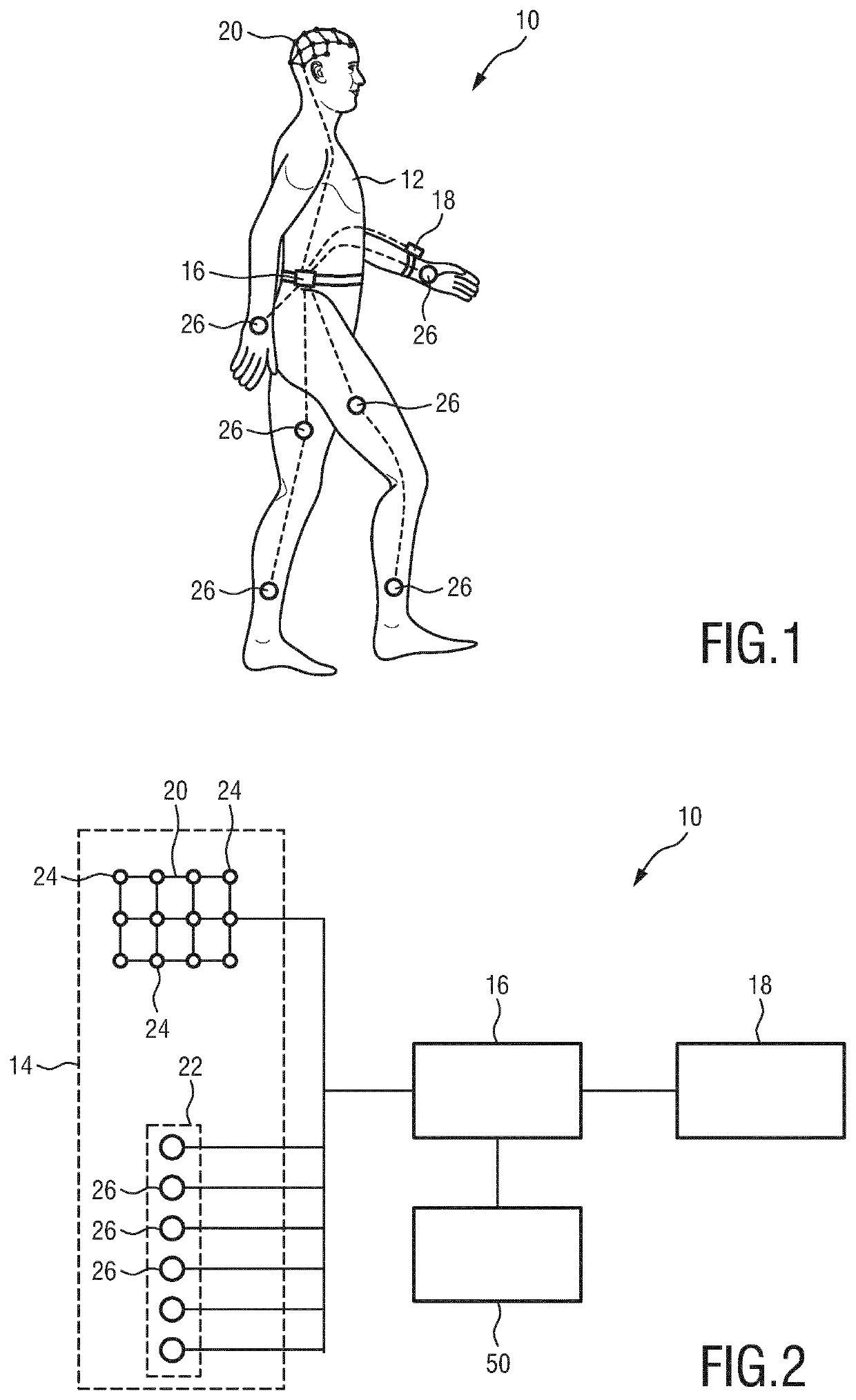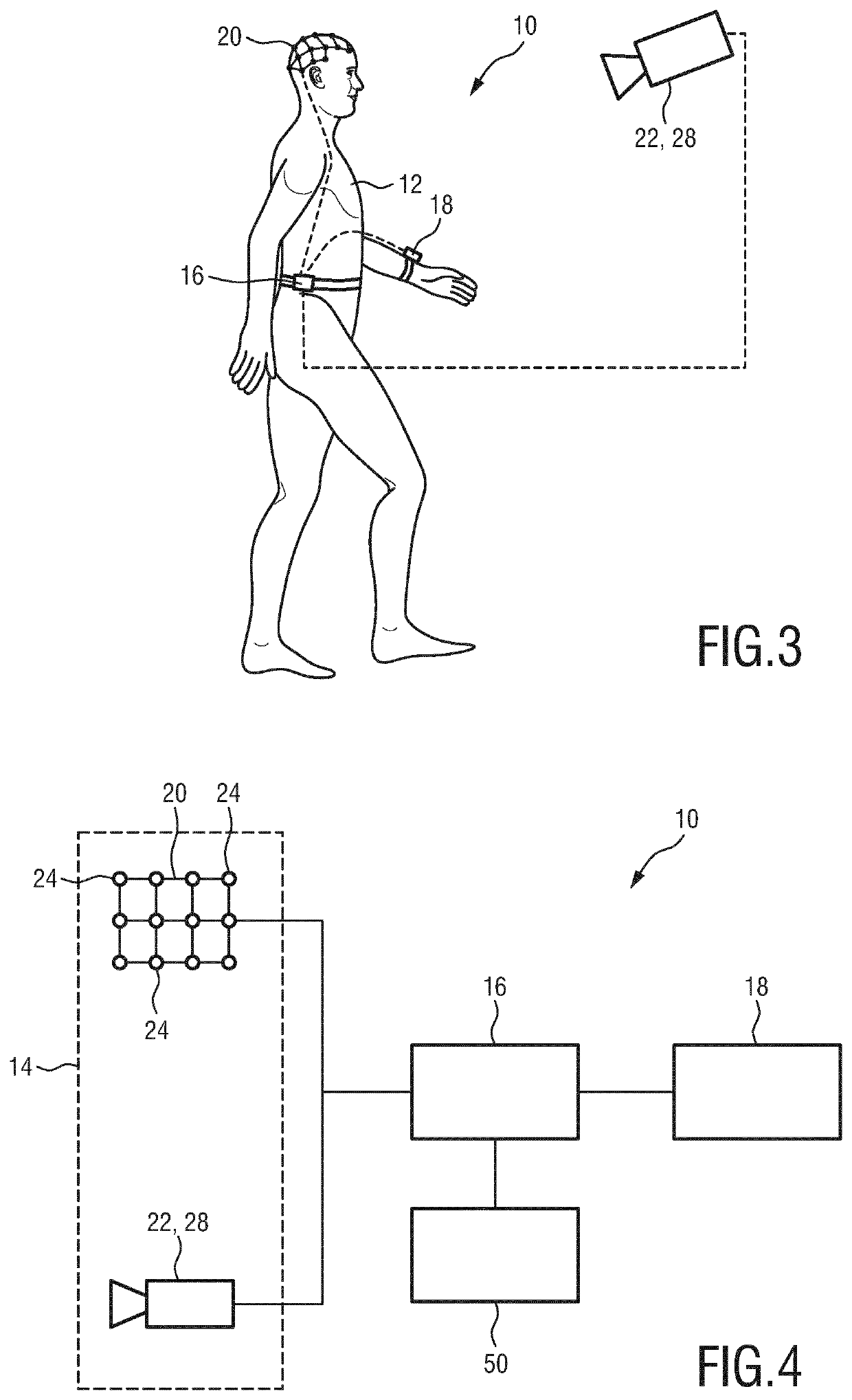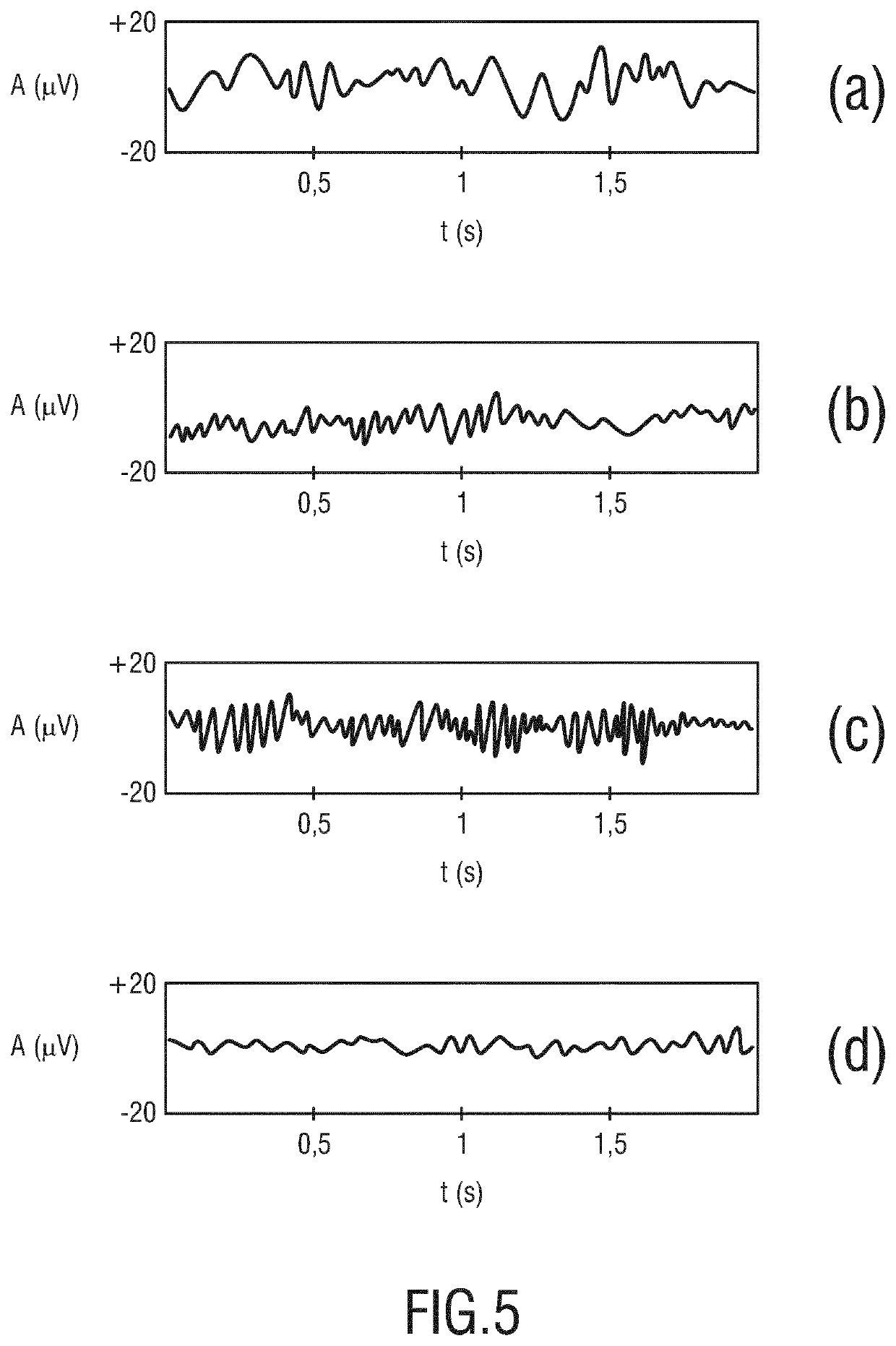System for supporting an elderly, frail and/or diseased person
a technology for systems, applied in the field of systems for supporting elderly, frail and/or diseased people, can solve problems such as risk of falling, difficulty in physical activity, and fatigue or physical impairment of peopl
- Summary
- Abstract
- Description
- Claims
- Application Information
AI Technical Summary
Benefits of technology
Problems solved by technology
Method used
Image
Examples
first embodiment
[0069]The detection unit 14 comprises one or more sensors for monitoring a cognitive and / or motoric activity of the person 12. These sensors, for example, monitor how and / or how much the person 12 is moving and / or they monitor the brain activity of the person 12. shown in FIGS. 1 and 2, the detection unit 14 comprises a brain activity sensor 20 for detecting a brain activity signal relating to the brain activity of the person 12 and a motion detection unit 22 for detecting a motion signal relating to a motion of one or more limbs of the person 12.
[0070]The brain activity sensor 20 is preferably realized as an electroencephalography (EEG) sensor which comprises a plurality of EEG electrodes 24. In the presented example shown in FIGS. 1 and 2 the EEG sensor 20 comprises twelve EEG electrodes. However, depending on the application, it may comprise an arbitrary number of EEG electrodes 24 (typically 10-24). These EEG electrodes 24 are configured to be attached to different positions on...
embodiment 1
[0071]As an alternative to an EEG sensor, the brain activity sensor 20 may be realized as a functional MRI sensor. A still further alternative for measuring the brain activity of the person is the usage of one or more thermal sensors which are distributed over the scalp of the person 12 and configured to measure the brain activity indirectly by means of thermal sensing of the head. Such a thermal sensing of the head is based on the assumption that increased cognitive effort increases the blood flow and thereby the heat released by the specific part of the brain of the person 12. Of course, such an indirect sensing of the brain activity of the person 12 is much less sensitive and reliable compared to the usage of an EEG sensor as used in embodiment 1 shown in FIGS. 1 and 2 of the present application.
[0072]The motion detection unit 22 according to the first embodiment comprises a plurality of accelerometers 26. These accelerometers 26 are configured to be attached to the limbs of the ...
PUM
 Login to View More
Login to View More Abstract
Description
Claims
Application Information
 Login to View More
Login to View More - R&D
- Intellectual Property
- Life Sciences
- Materials
- Tech Scout
- Unparalleled Data Quality
- Higher Quality Content
- 60% Fewer Hallucinations
Browse by: Latest US Patents, China's latest patents, Technical Efficacy Thesaurus, Application Domain, Technology Topic, Popular Technical Reports.
© 2025 PatSnap. All rights reserved.Legal|Privacy policy|Modern Slavery Act Transparency Statement|Sitemap|About US| Contact US: help@patsnap.com



